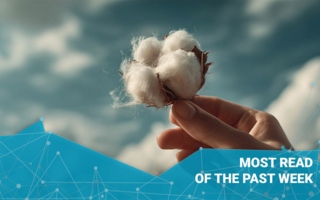25/03/2019 – Clothes go smart — auf Deutsch lesen
From intelligent jackets to smart pants
The digital age is in full swing and is inspiring change in the textiles and fashion industry.
The focus currently lies on the digitalisation of processes and structures in sourcing, sales, customer communications and marketing. However, product development and the product itself – garments – appear to be lagging behind.
We are yet to see feasible ideas for practical clothing applications such as the use of sensors and digital connectivity. Eye-catching illuminated fashion pieces are always exciting on the runway, but there are so many more possibilities beyond cool visual effects.
So many more possibilities beyond cool visual effects
R&D departments need to adopt new skills and interdisciplinary approaches to developing useful and relevant solutions that make the most of both worlds – technology and fashion. The sports sector as a key component of a global lifestyle could be a source of vital inspiration. Sportswear is functional, easy-care and extremely comfortable, making it indispensable for active, flexible and performance-oriented modern lifestyles. Integrating electronic and sensory features is the next logical step to keeping clothing current, with a particular focus on fitness and well-being. The most important aspects here are controlling, monitoring and measuring body functions and data, such as heart rate, blood pressure, the number of calories burnt during a workout and much more. The only really successful application on the market thus far are the much-loved fit bits, which also double up as trendy accessories. Garments are still struggling to find their feet, resulting in a rather modest growth in sales. This can partly be attributed to a general scepticism towards wearing technology on the body.
Smart-watches yes, smart shirts or shorts no
A key driving force in the development of highly versatile and tailored applications for smart textiles is the health sector, for example, in areas such as rehabilitation, the management of chronic illnesses and the long-term monitoring of vital functions.
The question is, whether and how the conventional textile industry will also make the leap into the digital age. At the moment, the innovators behind smartwear come from a very different background. These companies make a concentrated effort to learn about the individual needs and requirements of their customers, they have been meticulously gathering data for years and are miles ahead in the development of a wide range of customisable products.
What has not yet been widely discussed are ethical questions that arise from these technologically focused innovations. Are our bodies merely being turned into data sources? And who takes responsibility when smart clothes malfunction?
The ISPO Academy Masterclass 2019
The ISPO Academy Masterclass 2019 demonstrates how young international designers readily and eagerly incorporate technology and digital services in their creations. Especially, when it comes to activewear, technology, fashion and functionality almost seem inseparable. One such example is the “FLO” concept for a martial arts outfit complete with VR glasses, sensors and apps. The “Silverbond” concept, on the other hand, is geared towards the needs and wishes of the 55+ market. Biosensors measure, for example, blood sugar levels, body temperature and blood pressure. The data is transmitted and evaluated in real time, so that an alert can be sent if the results indicate a problem.
When it comes to smart clothing, it is imperative to keep the bigger picture in mind, to work in an interdisciplinary fashion and to ask ethical questions. If we don’t, intelligent garments will amount to no more than another business model. But if we do, they have the potential to genuinely improve people’s lives.





